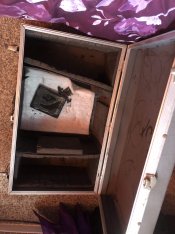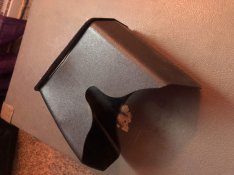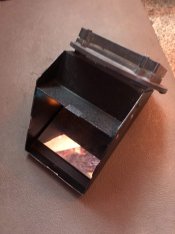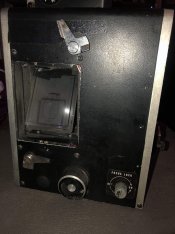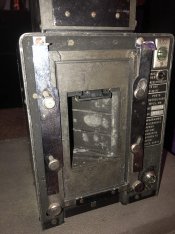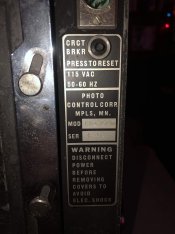Photo Control, in Minneapolis, manufactured a lot of photographic equipment used in high-volume work back in the day. Camerz was the brand name of their camera line. Their other big product line was "package printers" under the name of Nord. There seems to be very little known about these things on the internet today, but both were very significant in the US.
The camera you have is missing a film magazine. Most commonly, Camerz cameras would use 70mm (wide) film, unperforated, in long-rolls - 100 feet. You're also missing power cords for both the camera and the film magazine, as well as a trip cord.
Here's roughly how it would have worked back in the day. I'm gonna describe most of the operation for the record since I don't know if it's on the internet anywhere. I AM going from an old memory, which is not infallible. You'd set up the camera on a heavy-duty wheeled tripod. A wall outlet supplies power for both the camera and film magazine. A separate trip cable (with a push-button switch) attaches somewhere on the camera body. And somewhere will be a sync connector for an electronic flash.
Say you had a freshly loaded film magazine. You attach the film mag to the camera back via those two metal slides that hold it in place. Then plug a power cable into the back of the magazine, and plug the magazine's short cable into the back of the camera. Remove the magazine's dark-slide (a thin metal slide that keeps the film from getting exposed when off the camera). You want to advance the film a couple frames or so, which you can do by either pressing the advance button on the mag (which operates independent of the camera), or by tripping the camera several times. (The camera may not fire; if not press the reset button).
In operation you attach the viewing hood so you can see the ground-glass image reflected in the mirror. Focus and frame the subject carefully. In the camera's intended usage you would have a stack of sequentially numbered "sitting cards," with spaces for customer information. You stick the corner of the card in that box-like thing on top of the camera - it's called a "numbering device" and will actually photograph the sitting number on the card, exposing the number between the normal images. (It does this via a small periscope that you can see sticking down in the back of the camera.) When ready to shoot, press the trip button. This fires the shutter. A small light inside the numbering device turns on momentarily, exposing the sitting card number onto the film, and then the film magazine advances the film. During this time the trip function is disabled; the film magazine has an internal metering roller, so it knows how far to wind the film; when film is fully advanced the magazine gives the camera a reset signal, making the trip button active again. Note that a significant aspect to this reset signal is that one can't accidentally keep shooting without film. If the magazine doesn't measure film coming through it just keeps winding, and it never resets the camera. So the film is fully wound into the magazine, the photographer (who can't trip the camera) hears it still running, and realizes, oh, I'm out of film. They would then put the dark slide into the magazine, remove the mag, and ideally would have a spare magazine, already loaded, to put back onto the camera.
There is one last aspect to this - the "sitting card" still stuck in the numbering device. You would pull the card out and record any customer data. In a common configuration back in the day, the sitting card would have had two attached sheets. The top was printed with space for the customer name and address, etc. One could have the customer fill out the info; as they write a "self-carbon" action (like using carbon paper) transfers a duplication to the second page, a heavier ard stock. One end of the card, which also had the sitting number printed on it, could be torn off and handed to the customer as a receipt. So the film has the sitting number exposed on it, the customer has that same number on a receipt, and the photographer has double cards with the customer's name/address and sitting number. The second card, by the way, is actual a postcard, addressed to the customer, that says something to the effect of, "Your portraits are ready, you can pick them up at your studio (or whatever). The photographer ships everything to the processing lab, which is already set up to deal with the system. When the prints are ready the lab packs them in individual envelopes for each customer. Each envelope has the customer's name/address/sitting# card with it, and the notification postcards are ready to mail. So the customer has an initial receipt w/sitting #, plus a notification postcard with sitting #, and if both are lost, the envelope of photos has the customer's name on it. So it was a pretty clever system for keeping track of things.
Btw, I didn't mention that the photographer should also shoot an information slate, studio #, date, beginning and ending sitting#, at the beginning of the roll. If, somehow, the film became separated from the card data, the lab could still put everything in envelopes by sitting# and ship to the correct studio. And when customers show up with their postcard (w/sitting #), the envelope can be found by sitting #.
Probably more than you wanted to know, but perhaps you can impress your friends with your in-depth knowledge of the functions of your camera. Ps, I doubt that 70mm long-roll film is available anymore.








